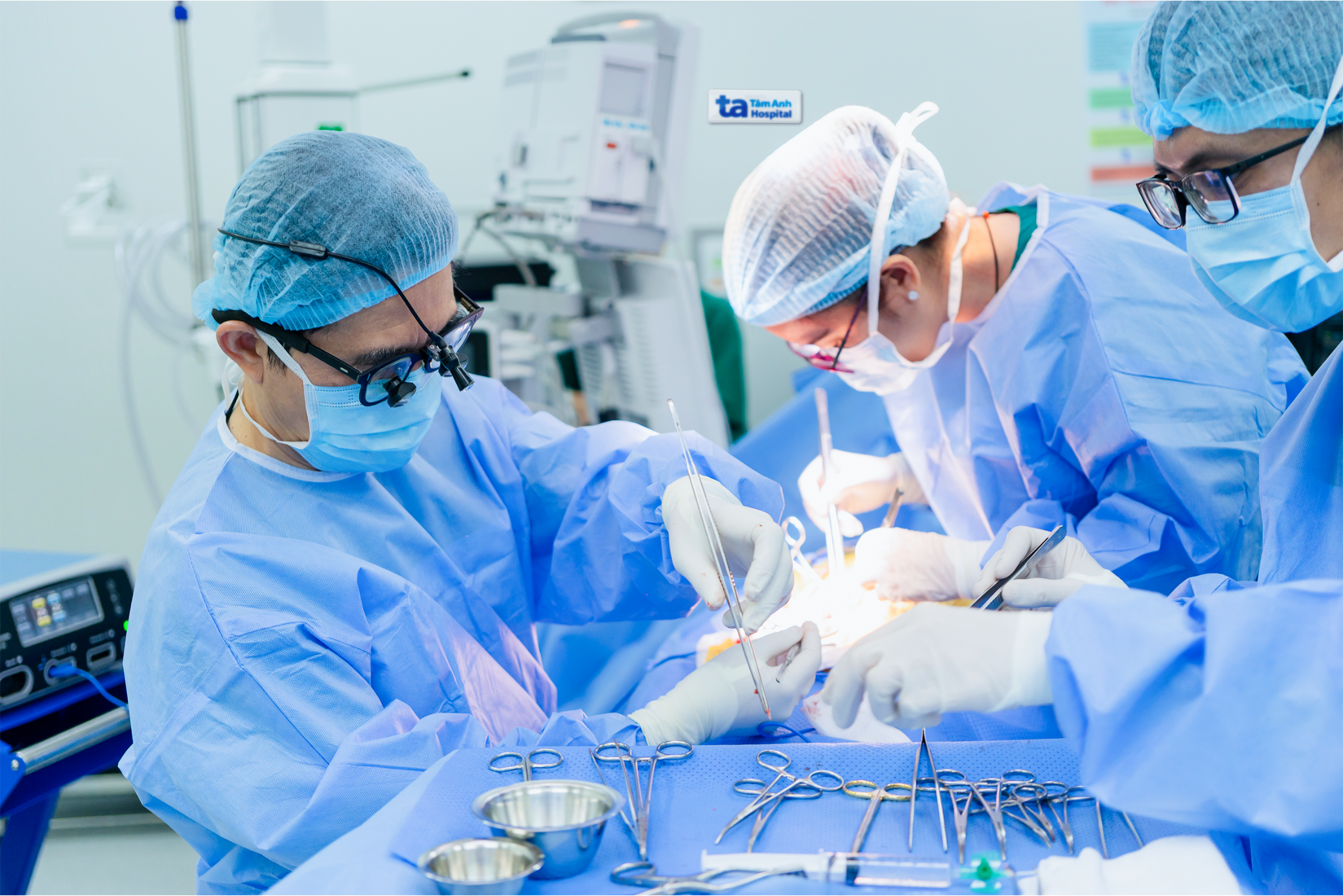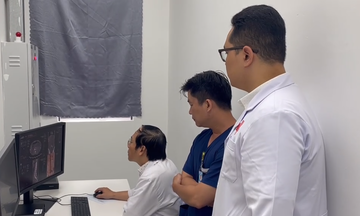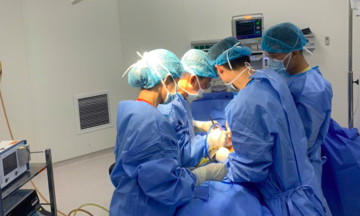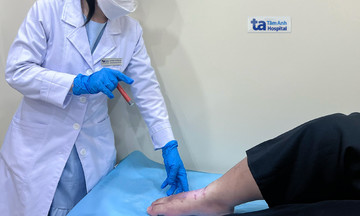Mr. Loi has a history of hypertension, diabetes, and dyslipidemia, for which he takes prescribed medication. For the past two weeks, his blood pressure has been unstable, occasionally rising to 170-180/100 mmHg. After fainting twice at home, he went to Tam Anh General Hospital in Ho Chi Minh City experiencing dizziness, lightheadedness, and fluctuating blood pressure between 160-170/110 mmHg. During emergency treatment, he fainted twice more. A CT scan revealed a mild stroke in the brain due to severe stenosis of the right internal carotid artery, restricting blood flow to the brain.
The carotid arteries are the main branches originating from the thoracic aorta, running along both sides of the neck to supply blood to the brain (internal carotid artery) and structures in the neck and face (external carotid artery). Internal carotid artery stenosis occurs when the artery walls thicken due to plaque buildup, gradually narrowing the artery's lumen. This reduces blood flow to the brain. If the stenosis is severe, it can cause brain damage, manifesting as symptoms of a transient ischemic attack (TIA) or stroke.
Dr. Nguyen Anh Dung, Head of the Department of Cardiothoracic and Vascular Surgery at Tam Anh General Hospital in Ho Chi Minh City, confirmed that Mr. Loi exhibited typical symptoms of a TIA (mini-stroke). Without timely intervention to widen the artery, blood flow to the brain could be completely blocked, causing a stroke.
 |
Dr. Dung (left) and the surgical team perform carotid endarterectomy on the patient. Photo: Thanh Luan |
Dr. Dung (left) and the surgical team perform carotid endarterectomy on the patient. Photo: Thanh Luan
Doctors performed a carotid endarterectomy on Mr. Loi's right internal carotid artery. This procedure is indicated for carotid artery stenosis of 60-99% where the stenosis is surgically accessible and the patient has a low risk of surgical complications.
To access the artery and remove the plaque, the surgical team had to clamp the carotid artery. During this time, the anesthesiologist maintained Mr. Loi's blood pressure at 130-140 mmHg to ensure adequate blood flow to the brain. Using Near Infrared Reflectance Spectroscopy (NIRS) to monitor brain tissue oxygenation, the team tracked cerebral blood flow in real-time, allowing for appropriate adjustments and effective operation.
After over an hour, the team removed all the plaque, ensuring no fragments remained in the artery. Mr. Loi regained consciousness and recovered quickly within a few hours after surgery. His blood pressure stabilized at 130/80 mmHg, and he was discharged two days later.
According to Dr. Dung, carotid artery disease often presents no symptoms until a TIA or stroke occurs. Individuals experiencing fainting, dizziness, facial drooping, hemiplegia (paralysis on one side of the body), slurred or lost speech, unilateral vision loss, or balance problems should seek immediate medical attention. High-risk individuals, even without symptoms, should undergo regular checkups and cardiovascular screening.
To prevent carotid artery disease, Dr. Dung recommends avoiding tobacco, maintaining a healthy weight, limiting unhealthy fats, prioritizing fruits and vegetables, reducing salt intake, exercising regularly, and avoiding excessive alcohol consumption. Managing chronic conditions such as dyslipidemia, diabetes, and hypertension is also crucial for protecting the arterial system.
Thu Ha
*The patient's name has been changed.
| Readers can submit questions about cardiovascular diseases here for doctors to answer. |












